Xem TIN TỨC
A SUCCESS STORY
Friday - 15-06-2018 | 08:26:20 AM
Friday - 15-06-2018 | 08:26:20 AM
TIN MỚI NHẤT
bình luận mới
Đoàn Quang Phong
Gửi TS Đỗ Ngọc Diệp Đọc bài viết của TS tôi rất tâm dắc.Vấn đề cơ gới hoá thu hoạch là khâu cấp thiết giá thành thu hoạch cụ thể giảm chi phí 70000/tấn, tận thu hầu hết nguyên liệu gốc, phần loại bỏ được trả lại cho đất. nói chung máy thu hoạch phải đạt những tính năng như TS đã nêu.Tôi xin giới thiệu với ông mô hình tôi đã mày mò(www.youtube.com/watch?v=N_YppX5wEq4),cần sự cộng tác để hoàn thành. Những bất cập trên mô hình chẳng qua chỉ thiếu vốn đầu tư mà thôi. Tôi mong rằng Viện nghiên cứu qua ông quan tâm. Tôi chỉ là nông dân trồng mía rất nhọc nhằn trong khâu thu hoạch nên quyết tâm suy nghĩ thế thôi. Rất mong được cơ quan, cá nhân có tâm huyết và khả năng tiếp nhân để sản xuất máy công cụ này. Rất mong được trao đổi
Nguyễn Thế Hữu
Chân thành cảm ơn Chú Diệp! Bài viết của Chú rất hữu ích và mang nhiều ý nghĩa thực tế trong ngành trồng mía hiện nay. Chúng cháu kính chúc Chú luôn dồi dào sức khỏe để còn dẫn lối nhiều hơn nữa cho ngành mía đường Việt Nam.
Nguyễn Thế Hữu
Dear quý Anh/Chị đồng nghiệp!
Hiện nay tôi đã được 1 người thân giúp đỡ và lấy được những tài liệu dạng fulltext từ tạp chí chuyên xuất bản những nghiên cứu về cây mía "Sugar Tech",
Anh/Chị nào cần file fulltext để tham khảo thêm thì liên hệ với tôi qua email: nthuu@hotmail.com hoặc số phone: 0983.832.776
Lưu ý: Anh/chị chỉ cần gửi tên đầy đủ của nghiên cứu qua email.
Trân trọng!
Bùi Anh Văn
Gửi anh Đông anh có thể tải về và tham khảo tại đây:
http://www.mediafire.com/?b9jl3g7272zh17e
http://www.mediafire.com/view/?fr8e2frdhj60l2f
Phan Văn Toàn
Kính gửi Quý Viện
Để muốn có các tài liệu nghiên cứu trên phải mua trên mạng với giá 20 - 40 USD, vì vậy Quý Viện có quỹ nào để mua và cung cấp cho đọc giả tham khảo kịp thời các tiến bộ kỹ thuật.
Trân trọng cảm ơn!
Sugar Tech
June 2012 , Volume 14 , Issue 2 , pp 126-133
Wider Row Spacing in Sugarcane: A Socio-economic Performance Analysis
T. Rajula Shanthy , GR Muthusamy
Purchase on Springer.com
$39.95 / €34.95 / £29.95 *
* Final gross prices may vary according to local VAT.
lịch việt
Liên kết website
Thống kê
41693
Tổng số khách đã viếng thăm


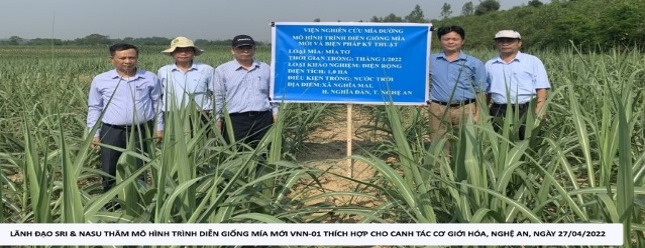
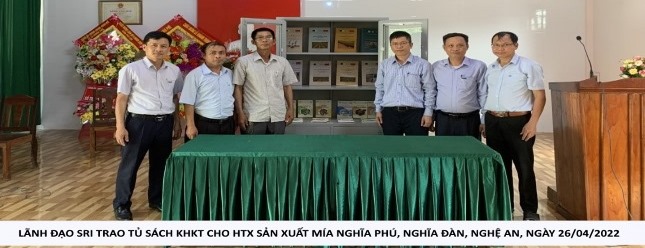
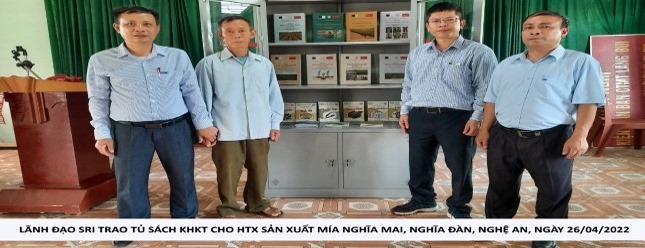
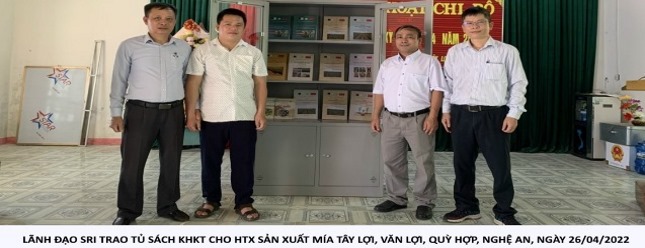

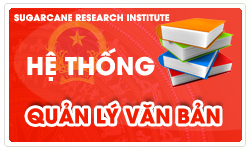



INDUSTRY BACKGROUND
The Philippines Sugarcane Industry contributes no less than P70 Billion to our economy annually. Out of the total land area of about 30 million hectares, sugarcane is planted to about 422,500 hectares in around 20 provinces within the 10 regions of the country, with about 62,000 farmers. Sugarcane growing areas cover 29 Mill Districts (MDs) – 7 MDs in Luzon, 3 MDs in Mindanao, 4 MDs in Panay, 2 MDs in Eastern / Central Visayas, 2 in Negros Oriental and 11 MDs in Negros Occidental, with combined crushing capacity of 185,000 metric ton cane per day.
Negros island shares 55% of the sugarcane production areas, followed by Mindanao with 21% share, Luzon with 14% share, Panay with 7% share and Eastern/Central Visayas with a share of 3%. In terms of farm productivity, and production costs, the national average of farm yields ranges from 55 to 60 TC/ha. while cost to produce 0ne (1) 50 kg bag of sugar is P1,100.00.
Analysis of the cost components of sugarcane cultivation shows that harvesting and loading of cane comprise 35% of the costs followed by land preparation(21%), planting(16%), weeding(10%), fertilizer application(10%) and irrigation(8%). It is evident that harvesting and loading of cane is the highest cost component in sugarcane cultivation, which can be areas where mechanization can be introduced.
Based on SRA records, about 85 percent of sugarcane farms in the country have areas five hectares and below, due to the natural course of land subdivision by inheritance, sale, and the Comprehensive Agrarian Reform Program. Unfortunately, compared to medium and large-sized sugar farmers, smallholder farmers have the lowest level of productivity and incur the highest production and logistics cost.
SUGAR BLOCK FARMING CONCEPT
The Sugarcane Block Farm (SBF) program was instituted to address concerns which beset the industry more particularly the low income of small sugar farmers undermining their viability and competitiveness. The objective is to reach economies of scale in agricultural production by consolidating land use without depriving the beneficiary of ownership. Scale is obtained by managing the use of the small farm sizes as an integral whole so that the business and economic activities are synchronized and become profitable.
The Sugarcane Block Farm (SBF) project is framed from the Sugar Regulatory Administration’s (SRA) banner program in stabilizing the sugarcane industry which encourages small sugarcane farmers to consolidate and take advantage of the benefits of economies of scale present in plantation-scale production in ARB areas to achieve higher yields and increased income.
Consolidation of small land holdings into a 30 to 50-hectare sugarcane plantation as one ‘block farm’ that is managed by a single organization optimizes efficiency, improves productivity and assures profitability. Ownership of each small farm is still with the farmer thus, allowing the farmer a share of the profit. It is a sensible but challenging strategy.
As designed, the block farm will be managed as one farm by the ARBO, such that the activities in the small farm are aligned and implemented according to the plans of the block farm to ensure the efficient use of equipment, deployment of workers, volume purchase of inputs, financing in milling, marketing and other operational advantages. The owners of small farms shall likewise be the workers in the block farm and will be paid according to their labor or services rendered.
NEGROS OCCIDENTAL EXPERIENCE
In the last quarter of 2016, now dissolved DAR NIR-BAC, using the open and competitive mode of procurement, awarded the implementation of the Sugar Block Farm project and the delivery of farm support services Negros Occidental to Professional Services Providers. A total of 62 Block Farms apportioned among
35 ARBOs were grouped into 10 Lots. Table 1.0 below provides the details of the coverage of the Phase 1 of the project.
Table 1.0. Negros Occidental SBF Phase 1 Coverage
FREEDOM, Inc. through competitive bidding, was awarded 8 out of the 10 Lots consisting of 28 Agrarian Reform Beneficiary Organizations ARBOs, involving 1,530 sugarcane farmers, and was tasked to implement 102 Techno-Demo Farms and High Yielding Variety Nurseries. The challenges of the project were the following:
FREEDOM, Inc. had to adopt a technology which could effectively deliver the aforementioned 6 challenges. It is aware of the ill effects of industrial farming, which involved the continuous use and abuse of chemical based farm inputs which has resulted to frequent incidents of declining productivity which indicates that elevated levels of production simply cannot be sustained through this method. Its viability is very vulnerable to environmental pressures such as those brought about by the practice itself and more importantly climate change. The data acquired through several decades by researchers worldwide support this and there is no debate about that.
To be able to address the present predicament of sugarcane farmers, it is not necessary to adopt an either/or posture with regards to sustainable farming as opposed to industrial farming. Under local conditions, whatever is usable between the two philosophies can be adopted provided that any practice which are known to be deleterious are minimized and its adoption temporary in nature. On the other hand, generally acceptable practices that will eventually lead to sustainability should be perpetuated. More importantly, in the area of production, protocols developed should be focused on immediate increases in yield in order for the farmer to quickly become globally competitive.
FREEDOM, Inc, has decided to adopt the CHEMBREAK SYSTEM which precisely addresses these abovementioned concerns and constraints presently confronting the Philippine Sugar Industry. The middle ground stance between these two conflicting philosophies as well as the integration of cutting-edge biotechnology based inputs and protocols has resulted to spectacular results in the TDF and HYVN farms in 102 sites in Negros Occidental where FREEDOM, Inc. has adopted and applied the technology.
The core concept of the Chembreak System is soil rehabilitation, maintenance of soil fertility and efficient use of plant growth factors through the modification of existing farm practices and the adoption of innovative biotechnology based protocols in order to achieve immediate and consistent elevated yields of 100 tons or more per hectare over a period of several cropping through multiple ratoon systems.
It was developed utilizing a holistic approach. It consists of several technical “sub-concepts” relating to the whole spectrum of sugarcane production that are not antagonistic to each other and put together as an integral whole. It attempts to copy the soil ecosystem of a rainforest which is diverse, complex, dynamic, self-sustaining and as such possesses the most rapid and efficient nutrient cycling capability known to man.
The effects of the adoption of the Chembreak System are as follows:
At the start of the project, FREEDOM, conducted benchmarking activities (including soil analysis of the 102 farm sites) and the results were as follows:
FINDINGS AND OBSERVATIONS
FREEDOM employed scientifically designed monitoring tools in order to assess the effectiveness of the technology introduced to the ARBOs. Crop performance was measured and compared to anticipated growth at regular time intervals (taking into consideration the stages of plant growth). These data were taken from three (3) 15-meter long randomly selected sampling rows per farm site. Data were taken to assess initial germination counts, rate of growth before and after application of fertilizers and most especially after inoculation.
After last dose of fertilizer application or after “closing”, regular measurements of data such as, plant girth (using a caliper), number of nodes, height of plant from the top soil level to last node and number of millable stalk per meter. The latest of these sampling activities was conducted on the last week of November 2017 where sample stalks were cut, cane tops removed, sample cane juice “sweetness” measured using a refractometer, and millable cane stalks weighed.
The data from these sampling activities were used to make projections of yield; in the case of TDFs – Yield (in tons) and LKg/TC and in the case of the HYVNs – lacsas of number of seed pieces. Projections for all TDF and HYVN sites were derived using the method described above and in more than 75% of the sites, projections have far exceeded the targets set by DAR, while the remaining areas have more modest results but nevertheless still complying with the targets.
Tables 2.0 and 3.0 below, reflects preliminary results of TDF harvest and HYVN cutback conducted on November and December 2017. The remaining areas are scheduled for harvest and cutback by January and February. Figures in both tables shows very promising results which tend to validate the expected results. For instance, TDF projections and actual harvest results of Hacienda Bernardita ARC far exceed the DAR target of 84 tons (20% more than benchmark production levels of 70 tons). Likewise, the DAR target of lowering Cost per LKg down to P900 has been achieved and in fact lowered further to P755,44 resulting to bigger spread between cost of production and actual selling price. On the other hand, HYVN performance also shows amazing results. Cutback results in both MIARBA and MACARBEN, as reflected in Table 3.0, indicate that the performance of both HYVN sites is about double the targets set by the project. This will result to the shortening of the waiting period before the whole area of the block farms have been planted with the new high yielding sugarcane varieties. Similar results are expected for the rest of the areas which are due for harvest & cutback by January and February.
Table 2.0. Preliminary Results of TDF Performance
Table 3.0. Preliminary Results of HYVN Performance
(as per random sampling)
RESULTS
1. Minoro-Isabel ARB Assn. – HYVN 1 (Sitio Minoro, Brgy. Sag-ang, La Castellana, Neg. Occ.)
2. Has. Malaga-Cuenca ARC – HYVN 2 (Brgy. Robles, La Castellana, Neg. Occ.)
SUSTAINABILITY
The CHEMBREAK SYSTEM recommends that multiple ratoon systems be adopted as part of the cost and time saving measures that will decrease overall cost of production and make the farming venture sustainable. The establishment of new plant shall only be resorted to when the annual average production of the previous crops falls below one hundred (100) tons. The project duration (1 year) prevents the effective demonstration of the ratoon crop technology, which has a specific protocol and different from new plant protocol. Although this can be presented in a classroom type seminar, experience dictates that effective learning and development of skills can best be achieve through the “learning by doing approach” or farmers field school approach” described earlier.
To capitalize on the substantial technology-driven financial gains that have been achieved, the first batch of ARB’s under the umbrella of their respective cooperatives have set aside financial resources to re-orient their protocols to that of the Chembreak System. The primary purpose of such a strategy is to generate capital for the conversion of the entire area operated by each Coop within a period of two years.
http://summabiotech.com